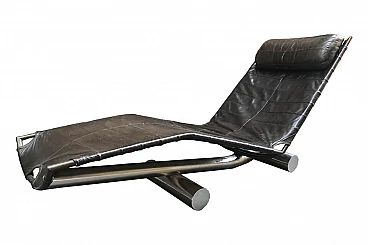
Paul Tuttle
Grown up in St. Louis, Missouri, but at home in Santa Barbara, California, Paul Tuttle (1918 - 2002) is considered one of the most eccentric designers of the 20th century. His unconventional training (he was rejected by the Art School Center in Los Angeles) takes place through direct experiences alongside designers such as Alvin Lustig, and architects such as Welton Beckett and Frank Lloyd Wright. In California, Tuttle became friends with the Eames, but unlike the duo, he opted for small production, mostly making unique pieces produced by external companies. A favourite with collectors, its elegant furnishings include a variety of seats designed for comfort and functionality, articulated around the combination of metal structures, leather and wood: among the most audacious are the Nonna Rocking Chair, and the Z and Y chairs. His first creations date back to the 1950s, when Tuttle rented an empty apartment in Los Angeles and, following the teachings of his cabinetmaker neighbour, began to manufacture furniture to furnish it: among these, one of his first tables was exhibited at the MoMa in New York in 1951, as part of the exhibition "Good design". From the 1950s onwards, Tuttle established collaborations with prestigious design brands, in particular with the German brand Strässle (from 1968 to the 1990s), from which his famous Chariot chaise longue in tubular chrome-plated steel and suede was born. From the '80s until the end of his career, he worked alongside the Californian craftsman Bud Tullis on the creation of unique pieces on commission.






.png)






